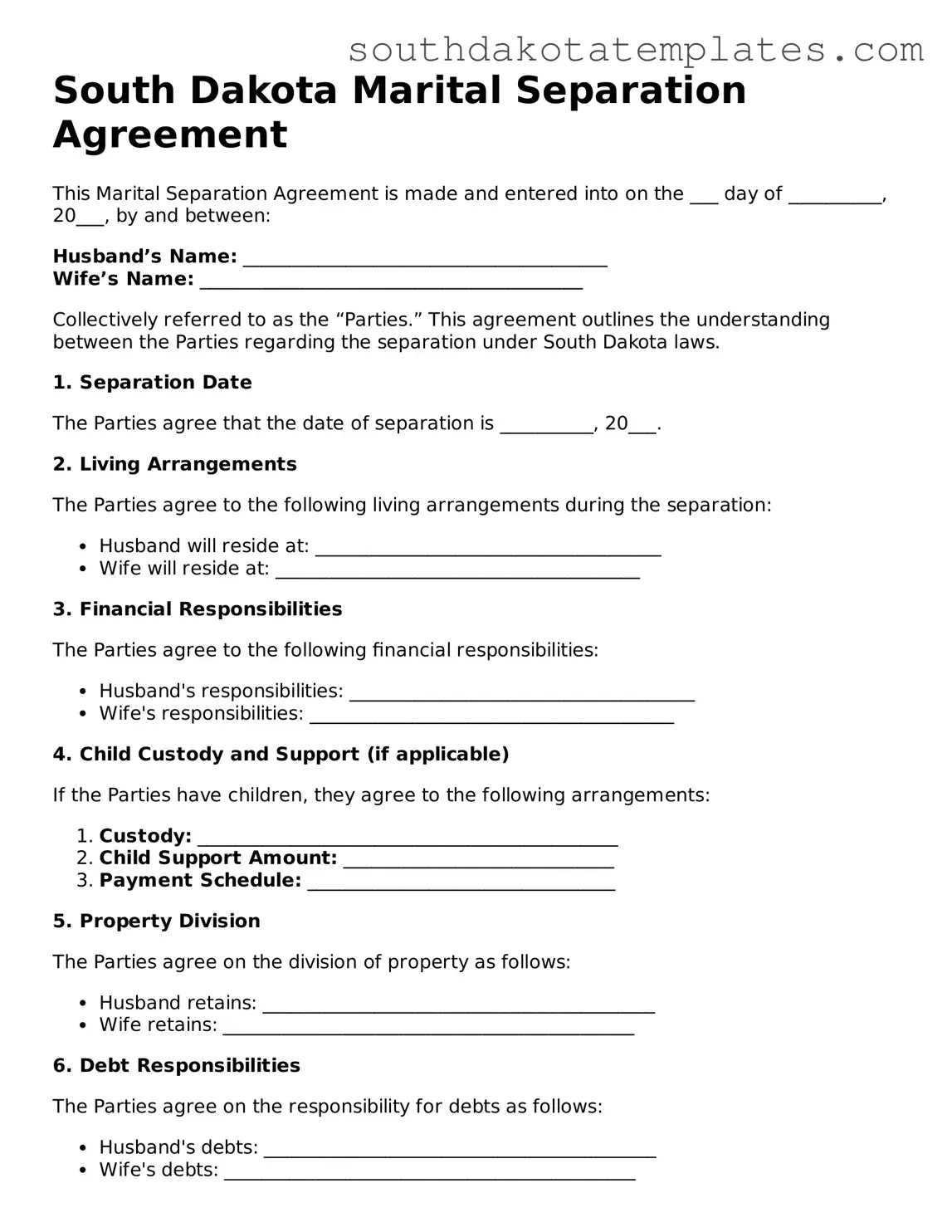Free South Dakota Marital Separation Agreement Document
A South Dakota Marital Separation Agreement is a legal document that outlines the terms and conditions under which a married couple agrees to live separately. This form serves to clarify issues such as property division, child custody, and financial responsibilities during the separation period. Understanding the nuances of this agreement is crucial for ensuring that both parties' rights and obligations are clearly defined.
Ready to take the next step? Fill out the form by clicking the button below.
Get Marital Separation Agreement
